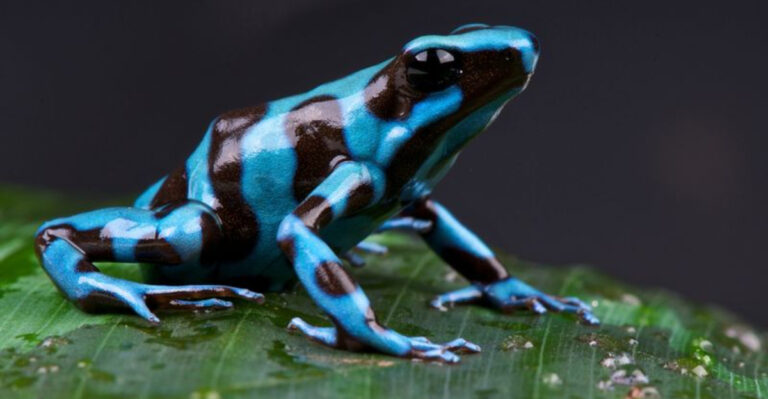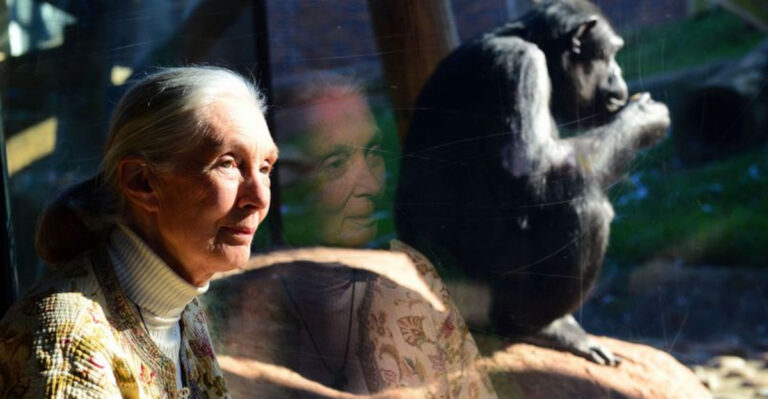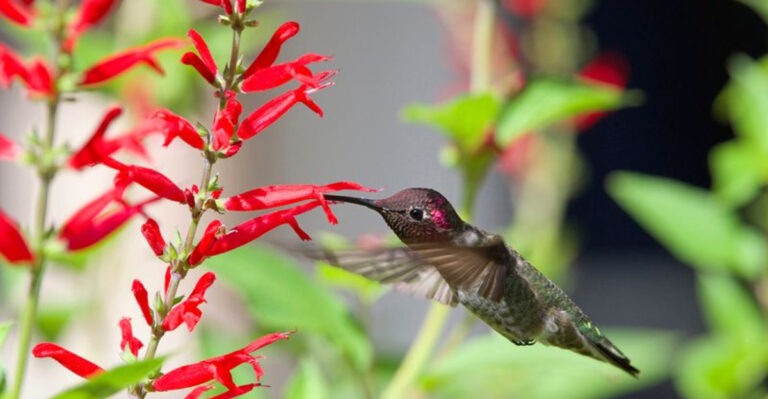13 Adorable Facts About The World’s Smallest Deer
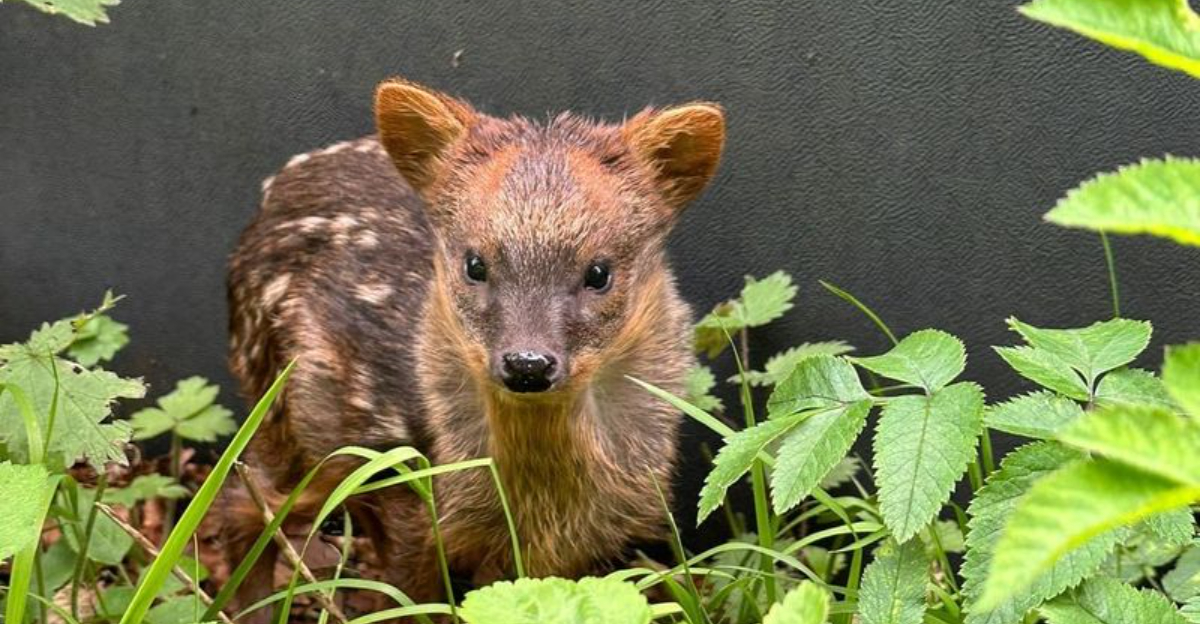
Deep in the forests of South America lives the Pudu, the world’s smallest deer species. These tiny creatures stand no taller than a house cat but pack an enormous amount of charm into their diminutive frames.
From their delicate hooves to their tiny antlers, Pudus capture our hearts with their adorable features and fascinating behaviors.
1. Tiny Size
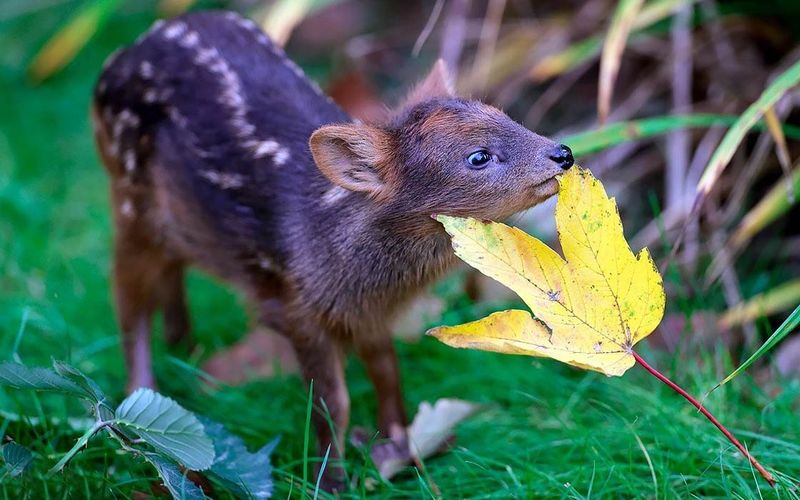
Standing barely a foot tall at the shoulder, Pudus could easily hide under many coffee tables! Adult Pudus typically weigh between 14-30 pounds, making them about the size of a small dog.
Their petite stature allows them to navigate through dense undergrowth with remarkable ease, slipping through spaces other deer couldn’t dream of entering.
2. Native To South America
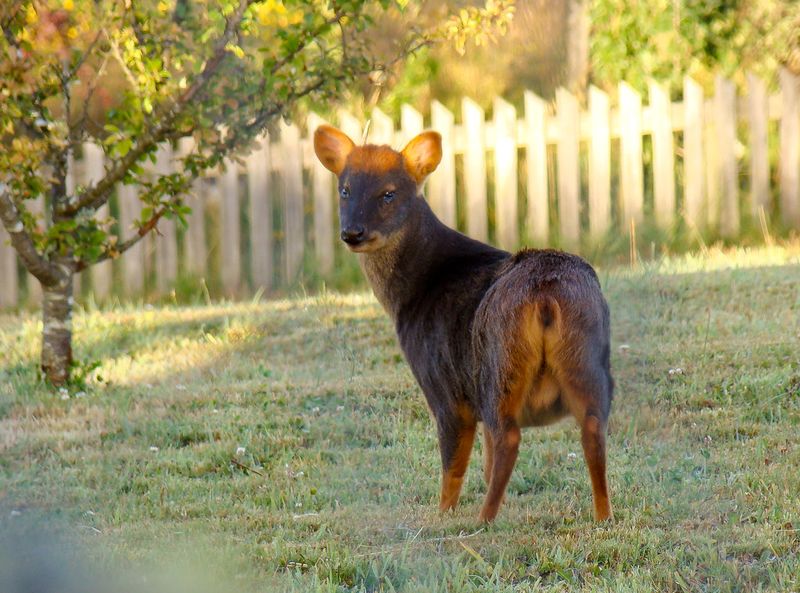
Home sweet home for these mini deer spans the temperate rainforests of Chile and Argentina.
The Southern Pudu prefers the cooler Andean slopes, while the Northern Pudu inhabits Ecuador, Peru, and Colombia. Their forest habitat provides perfect cover with dense vegetation and plenty of hiding spots from predators.
3. Super Shy Nature

Blink and you’ll miss them! These secretive creatures are masters of avoiding human contact. When startled, they freeze completely still rather than immediately fleeing.
If danger persists, they’ll dash away in a zigzag pattern, using their intimate knowledge of forest pathways to escape. Their timidity makes wild Pudus incredibly rare sights even for local residents.
4. Unique Antlers
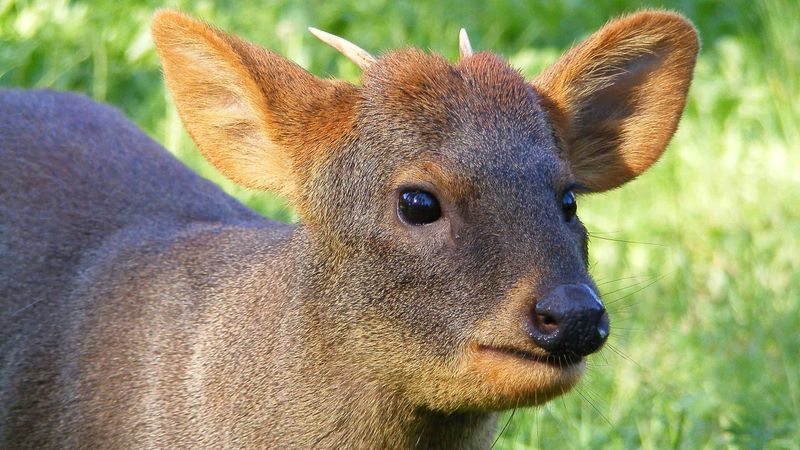
Male Pudus grow the cutest miniature antlers you’ll ever see! Unlike the impressive racks of larger deer, Pudu antlers reach only about 2-3 inches in length.
These tiny spikes don’t branch out into multiple points. They’re shed and regrown annually just like their larger cousins, following the same biological cycle despite their diminutive size.
5. Incredible Jumping Ability
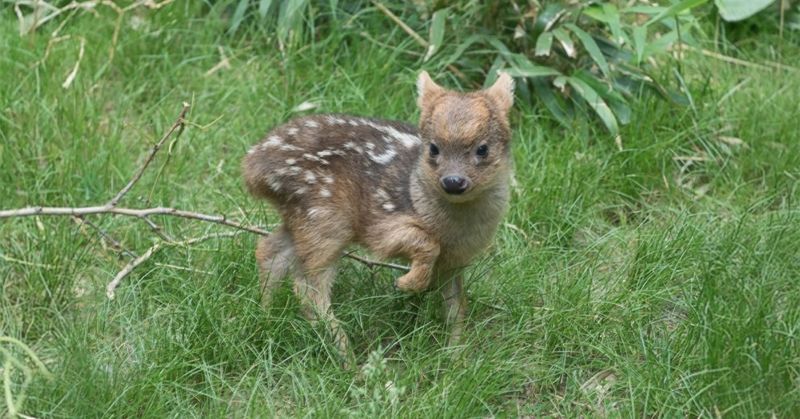
Don’t let their size fool you—these mini deer can leap like champions! Pudus can jump up to five feet high from a standing position when threatened.
They’ve been known to bounce straight up when startled, an adaptation that helps them spot predators over tall vegetation. Their powerful hind legs give them a surprising vertical advantage despite their tiny frames.
6. Diet And Feeding Habits
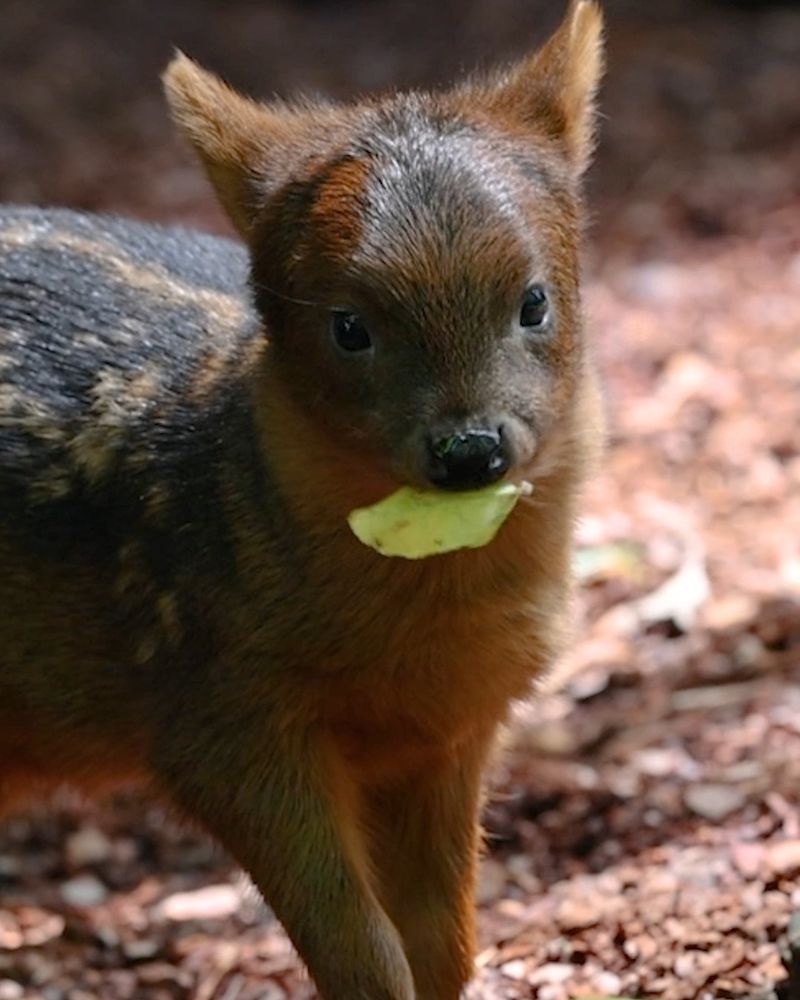
Pudus are nature’s salad enthusiasts! Their menu includes leaves, twigs, bark, berries, and fallen fruits they find while foraging through the forest understory.
With their small mouths, they carefully select the most tender vegetation. A fascinating feeding behavior: they’ll often stand on their hind legs to reach tasty leaves on higher branches, resembling tiny ballet dancers.
7. Reproductive Behavior
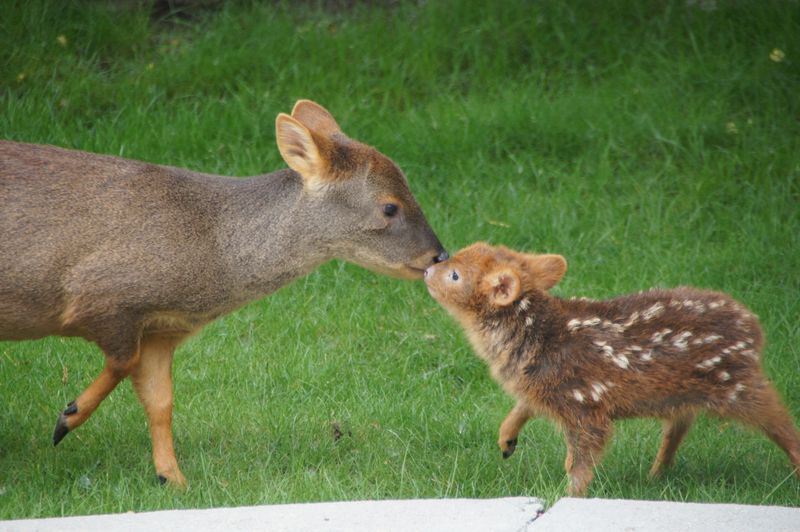
Baby Pudus are perhaps the most adorable creatures on Earth! After a 7-month pregnancy, mother Pudus typically deliver a single fawn weighing less than a pound.
These tiny babies are born with white spots that help them blend into dappled forest light. Mom will hide her fawn in dense vegetation while she forages, returning several times daily for nursing sessions.
8. Excellent Camouflage

Playing hide-and-seek is their specialty! Pudus sport a reddish-brown coat that perfectly matches the forest floor’s fallen leaves and woody debris. Their fur even changes shades seasonally—darker in winter, lighter in summer.
When motionless, these tiny deer virtually disappear against their woodland backdrop, a critical survival skill in predator-rich environments.
9. Unusual Vocalizations
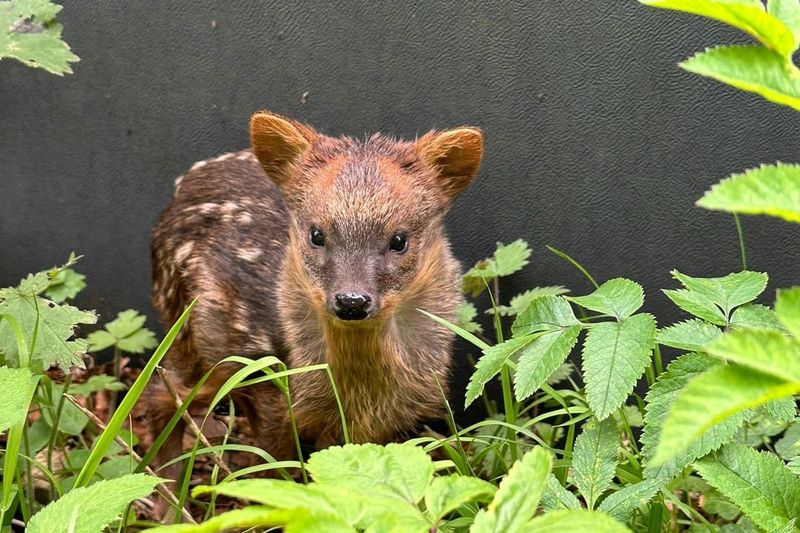
Whispers of the forest! Unlike their vocal larger relatives, Pudus are remarkably quiet creatures. They communicate primarily through soft whistles, gentle grunts, and subtle bleats.
When truly alarmed, they might emit a short, sharp bark—their version of a danger signal. Their quiet nature helps them remain undetected by predators in their dense forest homes.
10. Incredible Speed
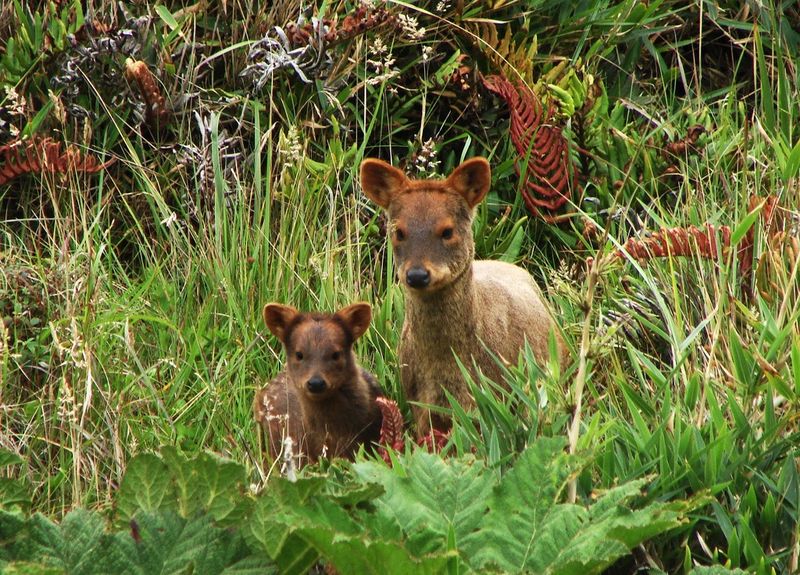
Small but speedy! When danger lurks, Pudus can dash through the forest at surprising speeds up to 25 miles per hour.
Their specialized body design creates natural running paths under dense vegetation where larger predators can’t follow. They’ve developed a unique running style—keeping their heads low while sprinting—that allows them to zip through the tiniest openings in the underbrush.
11. Solitary Creatures

Social distancing champions! Adult Pudus prefer the solo life, coming together only during breeding season. Each deer maintains a small territory of about 40 acres where it creates a network of tiny trails.
These paths form intricate mazes through the undergrowth, connecting feeding areas, resting spots, and escape routes. They mark these territories with scent from facial glands.
12. Conservation Status
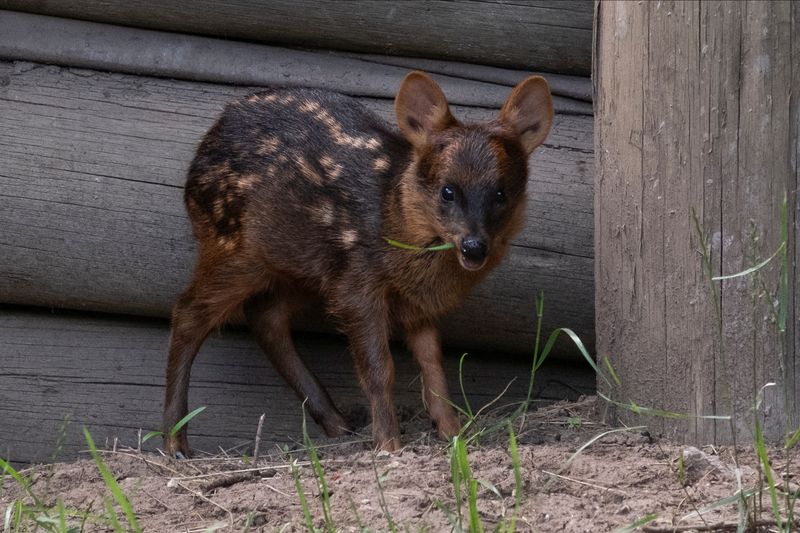
These woodland treasures face serious challenges! Both Pudu species are listed as vulnerable or near-threatened on conservation lists. Habitat destruction from logging and forest clearing represents their greatest threat.
Domestic dogs also pose a significant danger, often chasing and killing these tiny deer. Several conservation programs now focus on protecting their remaining forest habitats and educating local communities about their importance.
13. Adorable Fawns
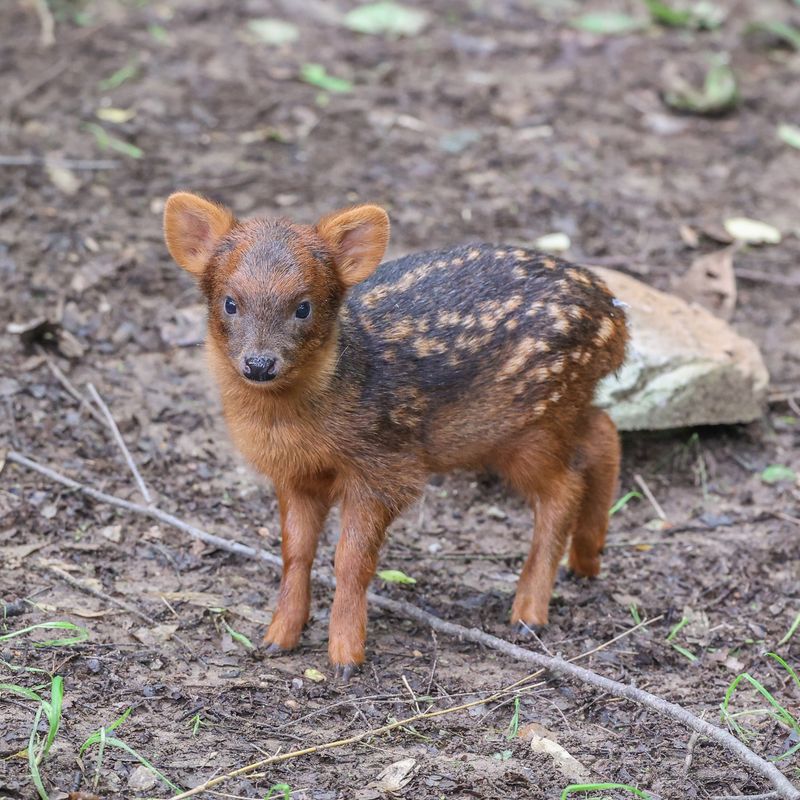
Heart-meltingly cute! Newborn Pudu fawns weigh about 2 pounds and stand on wobbly legs within 30 minutes of birth. Their coats feature white spots that create perfect camouflage in dappled forest light.
Mother Pudus hide their babies in vegetation while foraging, returning to nurse them several times daily. The fawns remain motionless when mom’s away—their best defense against predators.

